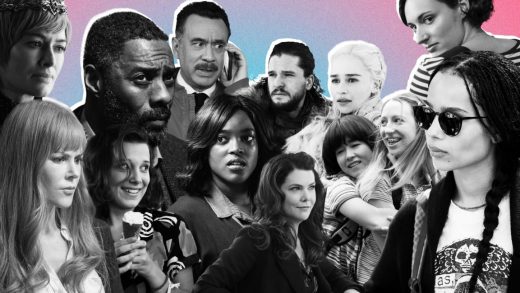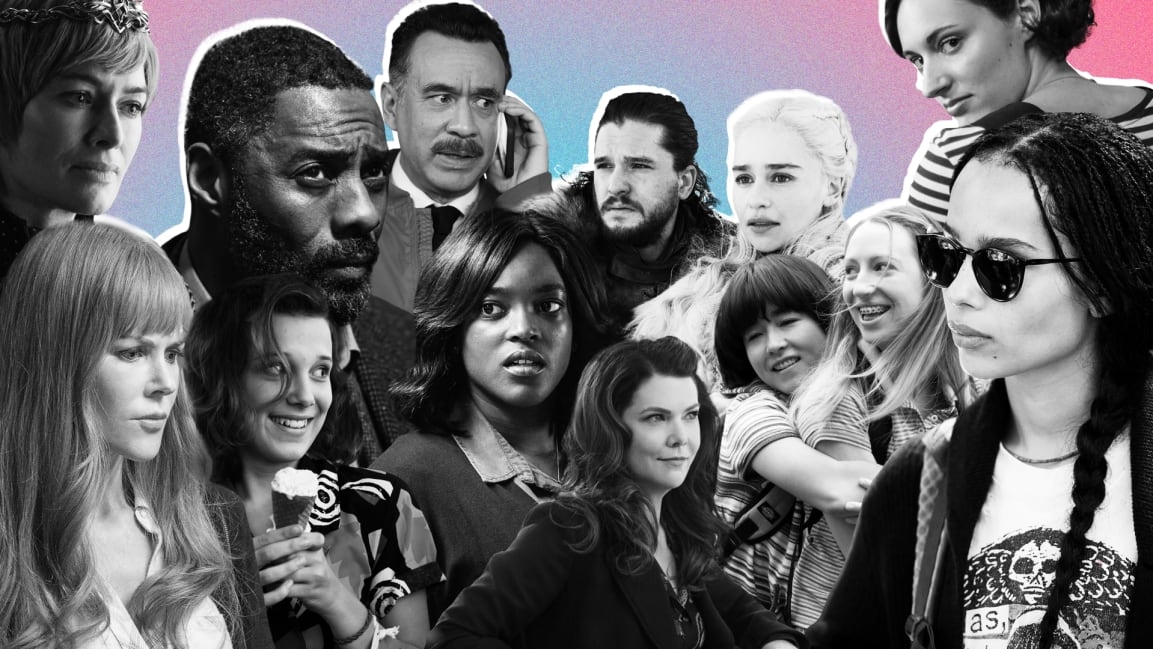Why we watch what we watch when we watch: The 5 jobs TV shows do for us in the Peak TV era
If the Bruce Springsteen of 1992, the one who released “57 Channels (And Nothin’ On)”, could jump directly into 2019, once he got over his astonishment at being a timelord, he would probably laugh at his old song’s impossibly quaint sentiment. There are now, of course, enough streaming services to make the very concept of a “channel” seem Jurassic, while the baseline of quality for most shows is ridiculously high. Nothin’ isn’t on anymore; everything is.
We have now been inundated with so much high-quality TV for so long, we have been spoiled by it. For the discerning viewer trying to keep up with the firehose spray, the standard for shows worth sticking with is Greatness. If it’s not great, it’s trash! The sheer abundance of perceived greatness, though, has become its own pain point. A recent Nielsen study suggests that it takes the average U.S. viewer 7.4 minutes to decide what to watch on a streaming service. Instead of struggling to find something to watch, we now struggle narrowing down an endless Cheesecake Factory menu of equally appealing options.
Were the Boss to update his song today based on his newfound knowledge of modern life, it would probably be titled something closer to “Every Show Is Amazing, and I Wish I Was Dead.” Well, maybe not that bleak.
The constant churn of new streaming services and marquee shows hasn’t just changed the amount of video content the average person watches—reportedly six hours per day—but the way they watch. Different shows now serve different needs, beyond just the primordial need to melt into the couch at the end of a long day, and we watch them all in different ways. Take The Office, for instance. In 2018, the average Netflix user watched 15.3 hours of the workplace comedy. Does it seem possible that most of those viewers watched that beloved, but long-defunct show in the same conditions they watched Stranger Things 3 this summer? The same number of episodes in a row, at the same time of day, with the same people around? Some viewers surely took in both of those shows in the same day, but if so, it was to fulfill two completely separate jobs.
Now that we have instant access to every conceivable type of show, those shows perform different functions for us. Sometimes we’re taking the edge off; other times, we’re putting our explorer’s pith helmet on and wading into the creative murk. But watching different shows in different ways for different reasons is the only way we can possibly watch as many shows as we do these days without quite feeling like we spend all our time watching shows.
Here are the five jobs TV shows do for us now, at least as one struggling viewer sees it.
Super Bowl
These are the event shows, the ones you plan an entire night around. Appointment TV may be dead in general, but it lives on in the occasional vessel of a series that, for whatever reason, hits critical mass and fuels an entire ecosystem of recaps and hot takes. The obvious example is Game of Thrones, which some may consider the last TV blockbuster of its kind, but consider that RuPaul’s Drag Race, now in its umpteenth season, has spawned weekly viewing parties in bars across the country. It doesn’t take a Game of Thrones to make a Super Bowl show, just something un-bingeable that people want to watch with a group of friends and possibly strangers as it airs.
IV Drip
This is what every executive wants their show to become. (Sure, they would prefer an entire slate of Super Bowls, but they’re also probably realistic about it.) These are the shows you are bingeing immediately upon release (Stranger Things, Fleabag) or counting the days until they air, from week to week (Big Little Lies, Queen Sugar), and probably watching with the minimal amount of phone usage. If you’re in a relationship, this is the show that you and your significant other don’t even have to discuss whether to watch because, hey, new episodes of GLOW are now available and thus take priority over anything else you might watch that night until you’re caught up. An IV Drip show may have a particularly good season and ascend to the status of a Super Bowl, but the way a show becomes an IV Drip, however, is because it was previously a . . . .
FOMO Show
Maybe PEN15 is good? Is everybody right about Los Espookys? Could that What We Do In the Shadows adaptation possibly do justice to the movie? (Remarkably, the answer to all these questions is: yup.) It seems like every day in 2019 brings a new show that gets people talking and forces you to decide whether to be part of The Conversation or remain on the periphery. You slot an initial viewing of these shows in where you can fit it, possibly at a season break on an IV Drip, and then to determine whether you go on to the next episode, you essentially have a race to see whether you end up watching the show more than you look at your phone. How many of your friends whose TV opinions you trust have to recommend a show before you give in? How many episodes do you have to watch (possibly in a row) before you decide this is maybe an IV Drip? How many episodes after that before you realize you got too excited too quickly and retire the show forever? Watching these shows feels like panning for gold, except instead of gold you get to have opinions.
Museum Stroll
With a truly stultifying spectrum of options, the surplus of shows that fall through the cracks grows exponentially each year. For most people, the number of critically adored, long-running series you just never got around to watching runs in the dozens, if not hundreds. Maybe it’s finally time to tackle Mad Men or The Wire? Remember when everyone was talking about Luther? Maybe you’re a BBC detective drama devotee and just don’t know it yet! Watching prestige TV years after its prime offers the same sense of exploration as a FOMO show but with the bonus of historic consensus around its quality rather than a chorus of early raves. How often do you take a Museum Stroll? Probably less often than you give a FOMO show a shot, the difference being that if a new show becomes an IV Drip, you just have to watch it from now on, but if it turns out The Sopranos is as good as you’ve been led to believe (somehow, it’s even better?), you now have seven whole-ass seasons to get through. In the age of infinite entertainment, finding out that a famously good show is actually good feels like both a gift and a curse. When it turns out to be a gift, though, one of these older shows can skip IV status and become . . . .
Comfort Food
This is what you watch immediately before you go to bed . . . or while doing laundry . . . or to psych yourself up for admitting you’re not going to work out on a Saturday afternoon. These are either shows you’ve seen before like Parks & Rec, Frasier, and Living Single that you’re running back again because they make you feel good. Or they’re shows that are new to you whose formula and rhythms you’ve instantly internalized so that each episode feels as familiar as a warm blanket. (My experience during semi-recent first viewings of Gilmore Girls and Buffy the Vampire Slayer.) The main hallmark of a Comfort Food show, though, is that you can potentially be on your phone the entire time, or making out with someone, and not really miss a thing. This is TV as hibernation. It’s the exact opposite of a Super Bowl but nearly as enviable of an achievement for its creators.
What’s your Comfort Food show? What FOMO show turned into an IV Drip most recently? Tweet at @FastCompany to let us know what you’re watching, and if we left any categories out.
[Photo Illustration: Samir Abady; Stranger Things: courtesy of Netflix; Game of Thrones: Helen Sloane/HBO; Big Little Lies: Jennifer Clasen/HBO; Fleabag: Steven Schofield/Amazon Studios; Los Espookys: Jennifer Clasen/HBO; Luther: Des Willie/BBC America; PEN15: Alex Lombardi/Hulu; Gilmore Girls: A Year in the Life: Saeed Adyani/Netflix]
(13)



